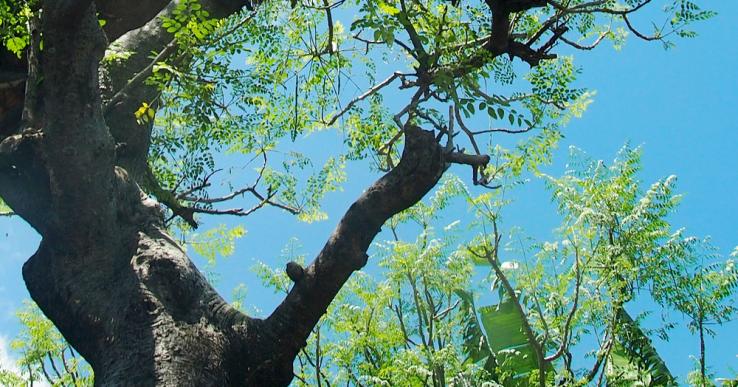
- Do you beat and twist the fibers to make ropes and mats?
- Do you extract the wood sap to make a blue dye for fabric?
- Do you treat your skin to the precious soft kernel oil?
- Do you use the leaf powder as a food supplement?
However you play the tree, you will benefit.
Known to the Nigerians, as idagbo monoye, this “crazy growing tree ‘, has roots that taste like horseradish and pods that look like drumsticks. It is a tree that loves the tropics and subtropics and is known to the Pilipino as ‘mother’s best friend. African’s share that affection.
To the Thai, it can be a fence that protects their gardens. In India it is their kitchen garden.
The Romans and Egyptians and Grecians wooed Moringa and made perfumes, skin lotions, balms and scrubs.
Farmers worldwide know that their long taproots and rapid growth is ideal for ‘alley cropping systems’, which increases farm production and much more.
There are 13 different species of Moringa, each renowned and worshipped as life-sustaining miracles. Cattle, sheep and goats love to eat moringa leaves, as do pigs and rabbits. They know what is good for them. Bees love the moringa flower nectar and we know how smart bees are and how much we depend on them.
Moringa is a superfood, loaded with nutrients (over 92 to be exact), vitamins, minerals, protein, antioxidants, and antinflammatories. It is said that there is no plant like moringa in the entire planet.
Imagine how the body and the skin loves this superfood.
We, in North America, are just learning how to benefit from this unique tree. Here at Earth to Body, we use Moringa in our Tooth Cleanser and in our Castile Moringa soap. If you would like a product with Moringa, do let us know.
- Connectez-vous ou inscrivez-vous pour publier un commentaire


Commentaires
Ms.medtech replied on Permalien
Hello, We're undergoing a thesis on how to make a blue dye from Moringa sap or wood, could anyone help us regarding with our thesis!
Haris replied on Permalien
Moringa is a miracle tree and it contains a lot of health benefits.
Peye replied on Permalien
How do you make dye from the wood?